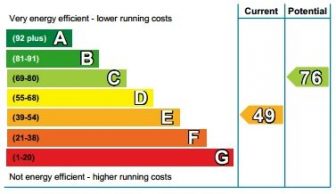 The majority of property buyers are prepared to pay more for properties that primarily uses renewable energy, a new study shows, while a third of buyers think EPC ratings are more important now than they were a year ago.
The majority of property buyers are prepared to pay more for properties that primarily uses renewable energy, a new study shows, while a third of buyers think EPC ratings are more important now than they were a year ago.
Homes with heat pumps demand a 59% premium compared to regional averages, according to research from property firm Savills.
The latest analysis reveals the disparity between how homes are heated in rural and urban locations, and across different house price bands. It comes as households across the UK have seen a significant jump in household bills, and the government is encouraging a switch to low-carbon alternatives before 2035 as part of its plan to cut Britain’s reliance on fossil fuel heating.
Savills survey of home buyers revealed that 71% of respondents consider EPC ratings to be important in their decision making. With almost a third (32%) stating that they place more importance on EPC ratings than they did a year ago.
At the same time, 59% said that they would be willing to pay more for a home if at least 75% of a property’s energy was powered by renewable sources.
Analysis of average values of homes transacted between 2019 and 2021 shows that newer, cleaner, methods of energy do demand a higher price tag.
Properties utilising community heating schemes* demand the highest average prices (£550,673), followed by homes supplied by heat pumps (£483,935). This is closely followed by homes that use oil (£419,490), which is likely driven by larger country properties that have oil Agas fitted.
Across England and Wales, homes with heat pumps fitted demand the highest premium compared with the regional average – with buyers paying on average 59% more for the offer of cleaner energy. This premium is most acute in the South East, with homes on average 84% more expensive.
Heat pumps are predicted to become the main source of low carbon heating for new homes, as the government sets out ambitions of installing 600,000 heat pumps a year by 2028.
Graph 1: Average house values 2019-2021
Source: Savills using Department for Levelling Up, Housing and Communities and Land Registry data
Rural-urban heating disparity
More than five out of six (84%) homes in urban areas rely on mains gas supply, compared with just a third (34%) in rural areas. In rural areas, almost half (43%) of homes are fuelled by oil.
Homes in the North-East are most reliant on mains gas (87%), while London (30%) and the South West (19%) have the highest number of homes using ‘cleaner’ methods, including electricity, community housing schemes and heat pumps.
Between 2004 and 2017 CO2 emissions from residential properties fell by 26% – but they have risen again by 9% between 2014 and 2020 according to government data. Savills estimates that £330bn is needed to implement all advised energy efficiency improvements to the UK residential housing sector as it seeks to meet targets set by the government including a desire to get all homes to EPC level C by 2035.
However, the rural building link with oil, and city dependence on gas, brings to the fore the need for a more sustainable solution.
Graph 2: Energy type by region (England & Wales), 2020
Source: Department for Levelling Up, Housing and Communities data
Lawrence Bowles, Savills residential research analyst, commented: “It’s no great surprise that the vast majority of homes still use mains gas heating, but faced with increasing energy prices, homes that offer more cost-efficient monthly alternatives – such as homes with heat pumps – are climbing higher up buyers wish lists when searching for a new home.
“However, our analysis shows that more environmentally friendly heating methods such as heat pumps and community heating systems are most prevalent in higher-value areas. As such, in many areas housing values would not necessarily support the investment in newer and cleaner forms of heating.
“It also highlights the enormous challenge set by the zero-carbon agenda targets and the uphill battle ahead that we face. While government subsidy will undoubtedly go some way in supporting people to reduce their homes’ environmental footprint, more resources and investment is needed to significantly reduce our reliance on fossil fuel heating.”
Andrew Perratt, head of country residential at Savills, said: “Rural communities, in particular, are heavily dependent upon oil for heating and domestic hot water, but as energy prices increase, and more people work from home during the winter, we are increasingly seeing buyers on the ground add energy efficiency to their search criteria.
“Rural buyers are increasingly on the lookout for homes with enough land to accommodate installing heat pumps on the property as they seek to replace older boilers in favour of greener, cleaner alternatives. We can expect to see this trend increase as the government provides further funds and support for heat pump installation.”




Comments are closed.